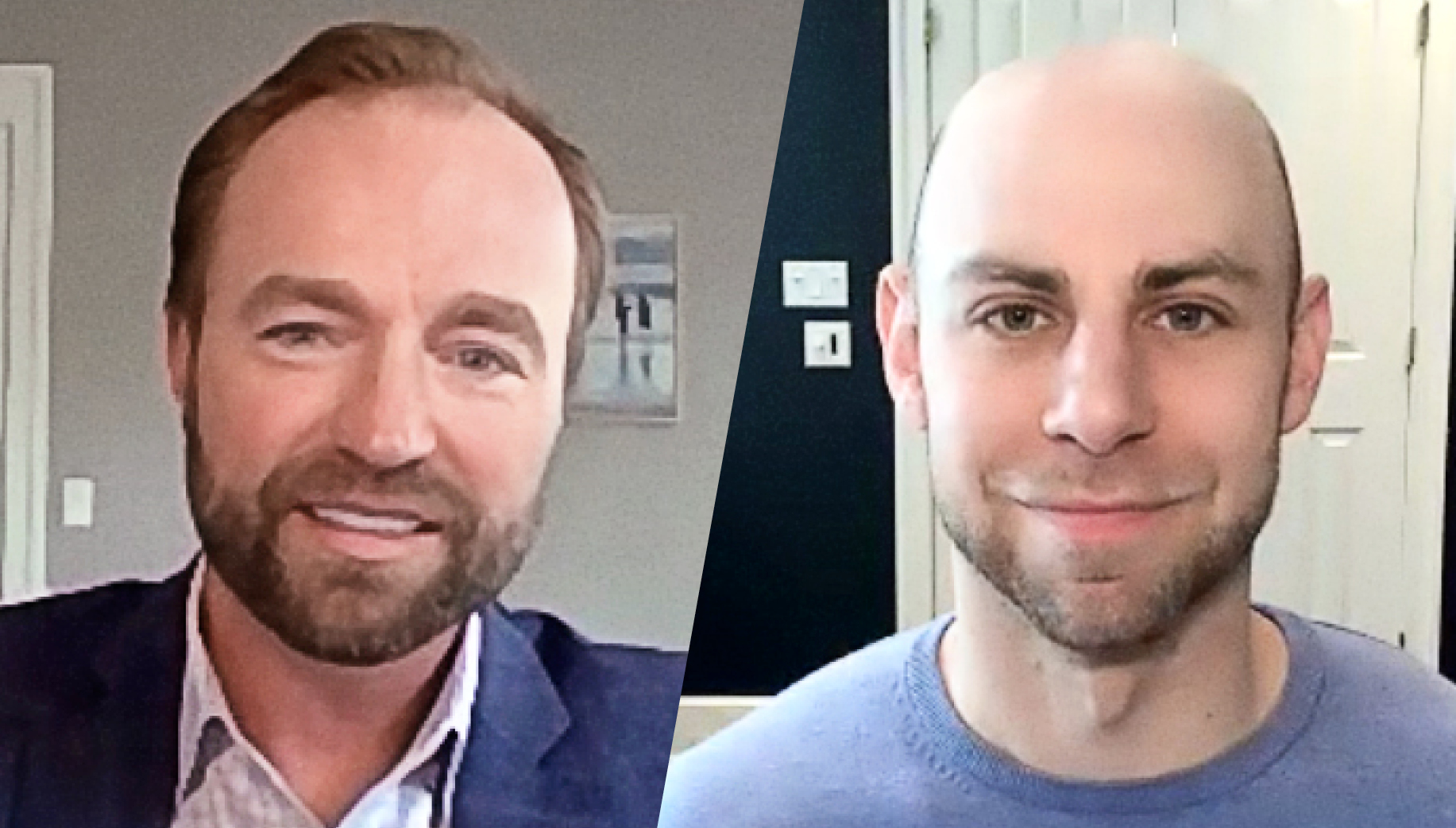
Dr. Adam Grant, an organizational psychologist and New York Times best-selling author, joined William Blair clients and colleagues for a conversation on bouncing forward from the pandemic and embracing lessons learned to rethink how we live and work in 2021 and beyond.
“One of the things that experience forced us to do was to start being a little bit more open minded in areas where we were closed,” Grant told the group during William Blair’s second A Healthy Way Forward virtual talk on May 25. “So many of us are quick to form assumptions and opinions and then too slow to question them.”
Then 2020 hit and suddenly everyone found themselves rethinking fundamental assumptions they took for granted—hugging an extended family member, eating in a restaurant, questioning whether they could get any work done at home while their kids learned remotely. He says now there is an opportunity to rethink all aspects of our lives such as returning to the office and creating more “rhythm” between work and family, finding a healthy way forward.
A Healthy Way Forward Series
William Blair introduced its A Healthy Way Forward conversation series in 2021 to provide a forum addressing multiple aspects of health: physical, fiscal, and psychological. Grant, Wharton’s top-rated professor for seven straight years, is a leading expert on organizational management. He is the #1 New York Times bestselling author of five books and his TED Talks on original thinkers and givers and takers have been viewed more than 25 million times.
Grant cited research that shows about 15% of the population typically comes out of a traumatic event with post-traumatic stress disorder (PTSD). However, over half of the people experience the opposite response with post-traumatic growth.
“We see consistently that people come through traumas saying I am stronger because of it,” Grant says. “I’m more grateful, I appreciate things that I didn’t before like having a job, traveling, and so on. And I’m closer to the people I suffered through this with. We built trust that we didn’t have before.
“People see new possibilities. It’s not just bouncing back, it’s bouncing forward.”
Back to the Office
On an organizational level, one way to facilitate post-traumatic growth is recognizing that people ran a lot of experiments during the pandemic that others can learn from, Grants says.
He suggested conducting re-entry interviews starting now with every person in the organization to prepare for the new version of physical work. Ask staff members: What was the best experiment they ran since March 2020 for productivity? For collaboration? For keeping culture alive with people in different places? What are some of the old routines we should rethink now that they’ve had some distance from the office?
“If we can consolidate all those ideas, those are opportunities to grow from what people are already learning and doing but maybe not spreading and sharing,” Grant says.
The Future of Work
Looking at the data coming in now out of the U.S., the average person is expecting to work one to two days from home, Grant says. From pre-pandemic research, it seems that the majority of workers who came into the office at least half the week felt more productive, more satisfied, more likely to stay without a real cost to relationships or collaboration.
The challenge is how do we navigate a hybrid workplace?
“One of the things we need to do is think about when to be synchronous and when to be asynchronous,” he says. “I think a lot of people are saying let’s come to work to collaborate as opposed to just to work, which means if we agree to be in the office three days a week, we’re all showing up the same days.”
He suggests examining how employees are working now and gave the analogy of defining roles in terms of sports: individual, relay, or team events. Is a team member’s work scheduled similar to say a gymnast—asynchronous—working anywhere, anytime. Or, are colleagues working like a relay team or a team sport like basketball where schedules and collaboration are synchronous.
“What I would love people to do post-pandemic is ask: What are we doing right now, are we playing an individual sport, a relay sport, or a team sport? Then let’s plan our collaboration accordingly.”
Creating Rhythm
For those who have been working from home since the onset of the pandemic lockdown 15 months ago, one of the biggest challenges is the spillover of work into life and the extra two to three hours a day many people are working now, Grant says.
“The old idea of work-life balance has been decimated by this pandemic,” he adds. “Even though many of us have had more quality time with our families than we did pre-pandemic, I wonder if one of the things we ought to do is think more in terms of work-life rhythm.”
For Grant, some days he has back-to-back events and meetings. Other days he is able to start work after his kids go to school, stop when they return, then catches up with any additional tasks after they’ve gone to bed. So one day might be weighted more to work, others more to family, creating a rhythm to his life. He’s also decided to limit his work travel.
“My hope is that in 2021 and beyond we do our rethinking more proactively and more deliberately, not to wait for the next major event,” Grant says.


